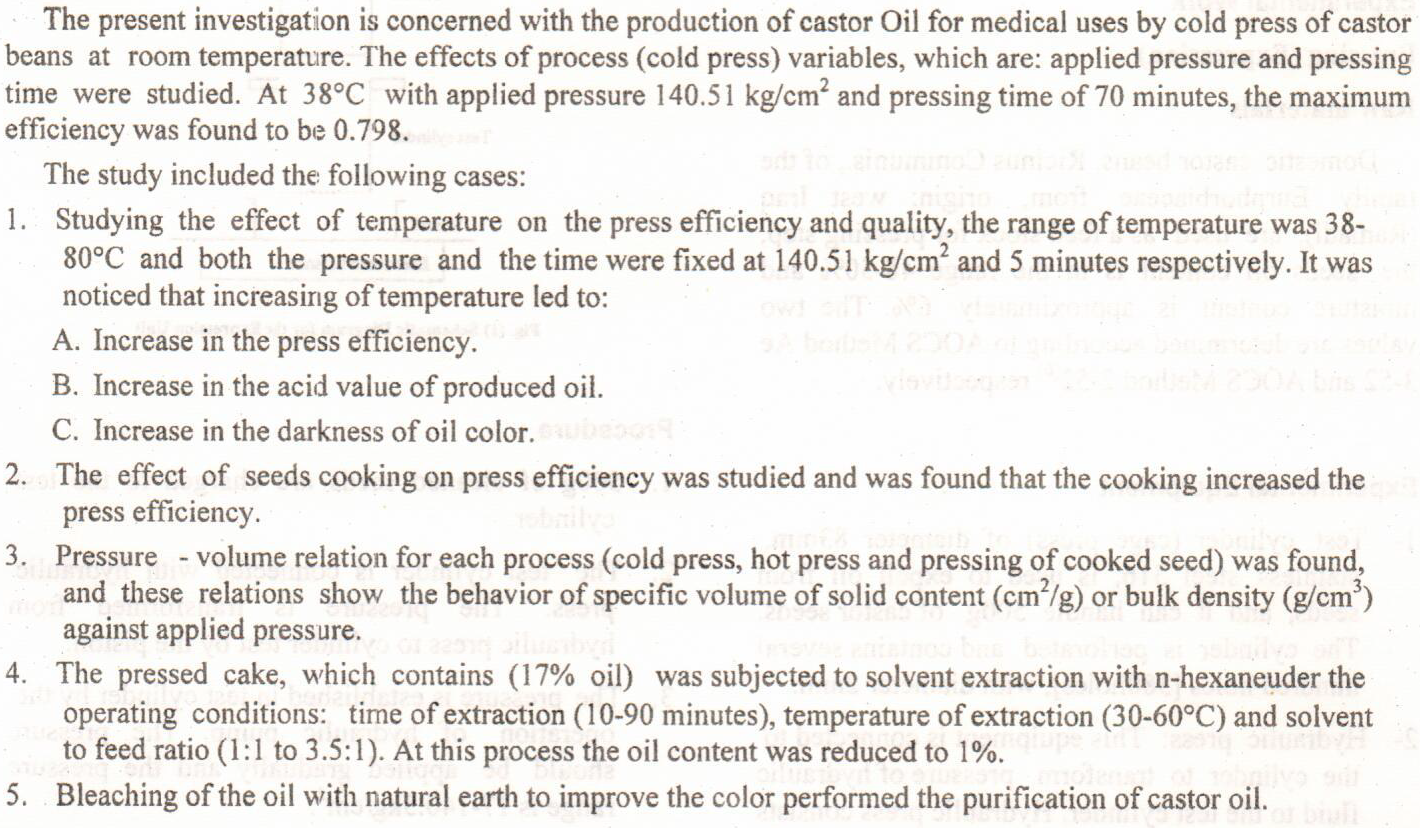
 (8)
(8)
 (9)
(9)
 (13)
(13)
Particulate matter (PM) emitted from diesel engine exhaust have been measured in terms of mass, using
99.98 % pure ethanol blended directly, without additives, with conventional diesel fuel (gas – oil),to
get 10 % , 15 %, 20 % ethanol emulsions . The resulting PM collected has been compared with those
from straight diesel. The engine used is a stationary single cylinder, variable compression ratio Ricardo
E6/US. This engine is fully instrumented and could run as a compression or spark ignition.
Observations showed that particulate matter (PM) emissions decrease with increasing oxygenate
content in the fuel, with some increase of fuel consumption, which is due to the lower heating value of
ethanol. The reduction in
Horizontal wells have revolutionized hydrocarbon production by enhancing recovery efficiency and reducing environmental impact. This paper presents an enhanced Black Oil Model simulator, written in Visual Basic, for three-dimensional two-phase (oil and water) flow through porous media. Unlike most existing tools, this simulator is customized for horizontal well modeling and calibrated using extensive historical data from the South Rumaila Oilfield, Iraq. The simulator first achieves a strong match with historical pressure data (1954–2004) using vertical wells, with an average deviation of less than 5% from observed pressures, and is then applied to forecast the performance of hypothetical horizontal wells (2008–2011). The result
... Show More (2)
(2)
 (2)
(2)
I
In this study, optical fibers were designed and implemented as a chemical sensor based on surface plasmon resonance (SPR) to estimate the age of the oil used in electrical transformers. The study depends on the refractive indices of the oil. The sensor was created by embedding the center portion of the optical fiber in a resin block, followed by polishing, and tapering to create the optical fiber sensor. The tapering time was 50 min. The multi-mode optical fiber was coated with 60 nm thickness gold metal. The deposition length was 4 cm. The sensor's resonance wavelength was 415 nm. The primary sensor parameters were calculated, including sensitivity (6.25), signal-to-noise ratio (2.38), figure of merit (4.88), and accuracy (3.2)
... Show MoreNew nanotechnology-based approaches are increasingly being investigated for enhanced oil recovery (EOR), with a particular focus on heavy oil reservoirs. Typically, the addition of a polymer to an injection fluid advances the sweep efficiency and mobility ratio of the fluid and leads to a higher crude oil recovery rate. However, harsh reservoir conditions, including high formation salinity and temperature, can limit the performance of such polymer fluids. Recently, nanofluids, that is, dispersions of nanoparticles (NPs) in a base fluid, have been recommended as EOR fluids; however, such nanofluids are unstable, even under ambient conditions. In this work, a combination of ZrO2 NPs and the polyacrylamide (PAM) polymer (ZrO2 NPs–PAM) was us
... Show More (79)
(79)
 (77)
(77)
Precise forecasting of pore pressures is crucial for efficiently planning and drilling oil and gas wells. It reduces expenses and saves time while preventing drilling complications. Since direct measurement of pore pressure in wellbores is costly and time-intensive, the ability to estimate it using empirical or machine learning models is beneficial. The present study aims to predict pore pressure using artificial neural network. The building and testing of artificial neural network are based on the data from five oil fields and several formations. The artificial neural network model is built using a measured dataset consisting of 77 data points of Pore pressure obtained from the modular formation dynamics tester. The input variables
... Show MoreSAPO-11 is synthesized from silicoaluminophosphate in the presence of di-n-propylamine as a template. The results show that the sample obtained has good crystallinity, 396m2/g BET surface area, and 0.35 cm3/g pore volume. The hydroisomerization activity of (0.25)Pt (1)Zr (0.5)W/SAPO-11 catalyst was determined using n-decane and base oil. All hydroisomerization experiments of n-decane were achieved at a fixed bed plug flow reactor at a temperature range of 200-275°C and LHSV 0.5-2h-1. The results show that the n-decane conversion increases with increasing temperature and decreasing LHSV, the maximum conversion of 66.7 % was achieved at temperature 275°C and LHSV of 0.5 h-1. Meanwhile, the same catalyst was used to improve base oil spec
... Show More (1)
(1)
SAPO-11 is synthesized from silicoaluminophosphate in the presence of di-n-propylamine as a template. The results show that the sample obtained has good crystallinity, 396m2/g BET surface area, and 0.35 cm3/g pore volume. The hydroisomerization activity of (0.25)Pt (1)Zr (0.5)W/SAPO-11 catalyst was determined using n-decane and base oil. All hydroisomerization experiments of n-decane were achieved at a fixed bed plug flow reactor at a temperature range of 200-275°C and LHSV 0.5-2h-1. The results show that the n-decane conversion increases with increasing temperature and decreasing LHSV, the maximum conversion of 66.7 % was achieved at temperature 275°C and LHSV of 0.5 h-1
... Show More (1)
(1)
Abstract:
It is essential to provide health care directly or indirectly based on laboratory tests in order of diagnosing diseases. There is an urgent need for the results of such tests to be accurate and reliable. Therefore, the International Organization for Standardization has prepared special standards for medical laboratories to prove their efficiency, presented in standards 15189: 2012. The aim of the research is to determine the possibility of the Al-alwiya Women's Hospital in meeting the requirements of the standards 15189: 2012, which includes administrative requirements consisting of fifteen items and technical requirements consisting of ten items. The research is important because laboratories shou
... Show More